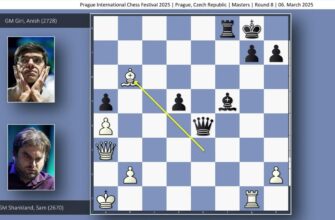The National Women`s Soccer League (NWSL) finds itself at a pivotal juncture, navigating a landscape of rapid expansion, evolving player welfare standards, and intricate logistical challenges. At the helm, Commissioner Jessica Berman is orchestrating a period of significant transformation, demonstrating a clear commitment to growth, strategic foresight, and, perhaps most crucially, the well-being of its athletes. Recent events and announcements underscore a league proactively shaping its future, rather than merely reacting to it.
A New Era for Player Safety: The “No-Brainer” Decisions
The recent abandonment of a match between the Seattle Reign and Racing Louisville following Savannah DeMelo`s medical emergency wasn`t merely an unfortunate incident; it was a testament to the NWSL`s sharpened focus on player safety. Commissioner Berman candidly described the decision to halt play as a “no-brainer,” a stark contrast to how similar situations were handled just months prior.
Earlier in the season, when Angel City`s Savy King experienced a medical event, the match continued, drawing significant criticism from teams and the NWSL Players Association. That incident proved to be a harsh but effective teacher. The league, in what could be seen as an accelerated masterclass in crisis management, swiftly revised its protocols. The DeMelo incident, while regrettable, showcased the tangible results of that learning process.
“No one wants to have experience practicing these policies,” Berman noted, highlighting the inherent tension between sporting competition and athlete well-being. “But having had the opportunity to play it out earlier this year, assess and learn… and actually have the chance to do it better the second time around was a moment that allowed us to show what we`re capable of.”
This evolving stance is more than just a procedural update; it`s a cultural shift, emphasizing that no game, no matter how high the stakes, is worth compromising a player`s health. The streamlined decision-making process demonstrated a league capable of swift, decisive action when it matters most – a critical marker of maturity for any professional sports organization.
Strategic Expansion: A Rolling Horizon for Growth
Looking to the future, the NWSL is reimagining its approach to expansion. Moving away from rigid, scheduled expansion rounds, the league will now adopt a “rolling process.” This innovative strategy reflects a pragmatic understanding of potential ownership groups, each with unique timelines and investment needs. Rather than forcing diverse entities into a singular, inflexible bidding window, the NWSL is offering flexibility to secure the most robust and sustainable additions to its roster.
Berman’s vision extends beyond mere numbers. While previous comments hinted at the NWSL potentially rivaling the scale of major men`s leagues like the NFL or NBA, she clarified that this isn`t about hitting an arbitrary team count by a specific date. Instead, it’s about recognizing the vast potential:
- The sheer number of viable Designated Market Areas (DMAs) across the country that can support a professional team.
- The ever-growing talent pipeline, continuously enriching the quality of play.
This perspective grounds the NWSL`s growth ambitions in sustainable factors, ensuring that expansion enriches the league rather than diluting its quality. It’s a sophisticated acknowledgement that growth isn`t just about getting bigger; it`s about getting better, smarter, and more strategically integrated.
Navigating Future Obstacles: World Cup Breaks and DII Delays
The NWSL`s forward-thinking approach is also evident in its planning for major logistical challenges. The 2026 Men`s World Cup, co-hosted by the U.S., presents a significant hurdle, with many NWSL markets serving as host cities and potential FIFA training facilities. To mitigate disruption, the league plans to pause play during the World Cup`s group stage, from June 11-27, aiming to resume by the Fourth of July weekend.
This decision, while potentially disrupting the season flow, demonstrates a calculated strategic sacrifice to ensure operational viability and prevent logistical nightmares. It’s a practical concession to a global event, allowing the NWSL to avoid direct competition for infrastructure and public attention.
Similarly, plans for a new Division II league, initially slated for 2026, have been pushed to 2027. This delay isn`t a retreat but a recalibration. Berman explained it as a move to “preserve optionality” and find the “best mechanism” to develop the talent pipeline directly below the top-tier teams. Given that many proposed DII teams would utilize existing NWSL club stadiums – which could be impacted by World Cup logistics – the delay also allows the league to avoid compounding infrastructure challenges. Sometimes, the most strategic move is to wait, allowing for a more thoroughly developed and resilient plan to take shape.
A League on the Rise
Under Commissioner Jessica Berman`s leadership, the NWSL is demonstrating a proactive, adaptive, and player-centric approach to its development. From implementing robust safety protocols to refining expansion strategies and meticulously planning for future challenges, the league is charting a course for sustained success. The decisions made today – often difficult, sometimes requiring a quick pivot – are collectively building a more resilient, dynamic, and compelling future for women`s professional soccer.








